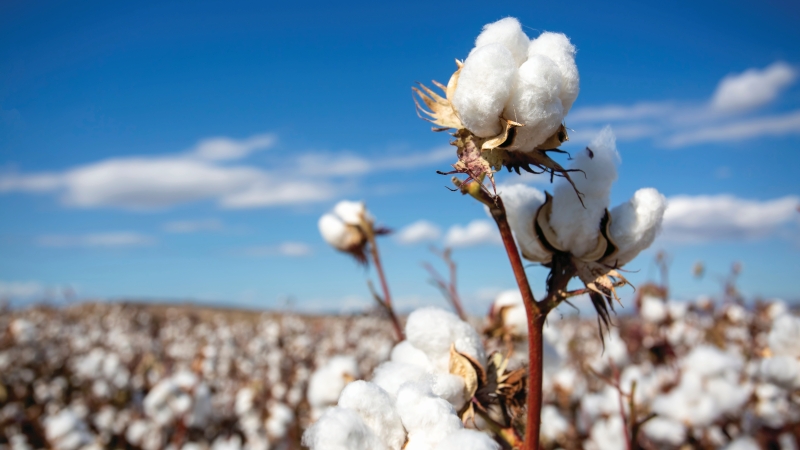Improved Bollworm Management Expected in 2018
Cotton farmers in Texas who experienced extremely heavy moth flights of cotton bollworm this season should have new, critical tools available to them in 2018 to better manage bollworms and other potentially damaging pests.
Darren Jones, commercial development cotton breeder for Monsanto, said of the cotton variety candidates under review this year in the Deltapine New Product Evaluator (NPE) Program, three lines featuring Bollgard 3 XtendFlex technology are well-suited to Southeast Texas. Commercialization of the varieties for 2018 would give farmers access to best-in-class germplasm while providing enhanced, season-long protection against damage from key lepidopteran pests.
“I’m excited about this because five years ago, when we were in meetings about which lines would have Bollgard 3 technology, the decision was made to pick germplasm that was a fit in this area,” said Jones, speaking at a Monsanto field day in Caldwell this summer. “We knew the insect pressure would be greater here than in many other regions. As a result, we have some strong Bollgard 3 XtendFlex variety candidates in our NPE plots that feature outstanding fiber quality characteristics and yield potential.”
Bollgard 3 XtendFlex technology is built on the proven, effective success of its predecessors and contains a third protein – Vip3A – that provides a third mode of action in addition to the two proteins found in Bollgard II cotton varieties. The introduction of Bollgard 3 technology is expected to result in potential for better insect control while increasing the longevity of the technology.
Three experimental cotton lines –16R338B3XF, 16R341B3XF and 16R346B3XF – were among the Deltapine Class of 18 candidates spotlighted during the field day, along with Bollgard II XtendFlex varieties that continue to perform well in the region.
Jones said 16R338B3XF is a cotton line with a broad acre fit, very good fiber quality characteristics and strong yield potential. 16R341B3XF and 16R346B3XF were both described as good growing varieties in the mid- to mid-full maturity range, with excellent fiber quality and yield potential.
“In fact, we have classified 16R341B3XF and 16R346B3XF as being complementary to DP 1646 B2XF, one of our top-performing Deltapine varieties,” he said. “If you are in a high worm situation and these two make it out into a commercial bag, I highly recommend looking at them on your farm. They could help control the worm situation and provide great yields and fiber quality.”
He added there has been an aggressive effort to ensure adequate seed supplies are available if the varieties are commercialized.
Many cotton fields faced heavy worm pressure this season. While farmers had to spray Bollgard II XtendFlex varieties in some areas, overall, the varieties did a very good job, said Steve Carlson, territory agronomist for Monsanto. At the same time, he said it is very encouraging that the NPE plots with Bollgard 3 XtendFlex varieties are looking extremely good and that the technology looks strong under heavy moth flight pressure.
“We’re seeing a lot of interest in Bollgard 3 varieties in Southeast Texas and how the variety candidates are performing in our Deltapine NPE plots and our other Bollgard 3 trials this season,” said Carlson.
He noted that farmers in South Texas are typically the first to plant cotton in the United States.
“We are far enough south that we have anywhere from a mild winter to no winter at all, so pests are something we deal with from day one,” he explained. “It’s an area known for having worm pressure in corn and cotton. Bollgard II technology has done well here, but Bollgard 3 will bring better worm control and enhance our ability to control fall armyworms, which will be a huge advancement.”
Source – Deltapine








